Table of Contents Show
Spoilers ahead for Samurai Champloo (2004).
“Chanpurū,” the original word the localization “Champloo” originates from, refers to a stir-fry dish from the Okinawa region of Japan which means “mix” or “mixing” (( Renato, and Vanpang. “Interview with Shinichiro Watanabe on 10 November 2012 during Anime Festival Asia(‘Afa’) 2012.” Macross World, Macross World, 1 Jan. 2013. )). Samurai Champloo (2004-2005), directed by acclaimed Shinichirō Watanabe, mixes traditional Edo-period Japan with modern hip hop styling in both the show’s music and visuals and meshes meandering slice-of-life stories with heavy plotlines that stand in immediate contrast with each other. Rarely does the overarching plot, the quest for the “samurai who smells of sunflowers” (a flower notable for having no scent of its own), dominate any singular episode. Instead, the journey for the Sunflower Samurai directs or incites conflicts, growth, and circumstances by sheer virtue of being the reason the main trio of characters journey together at all.
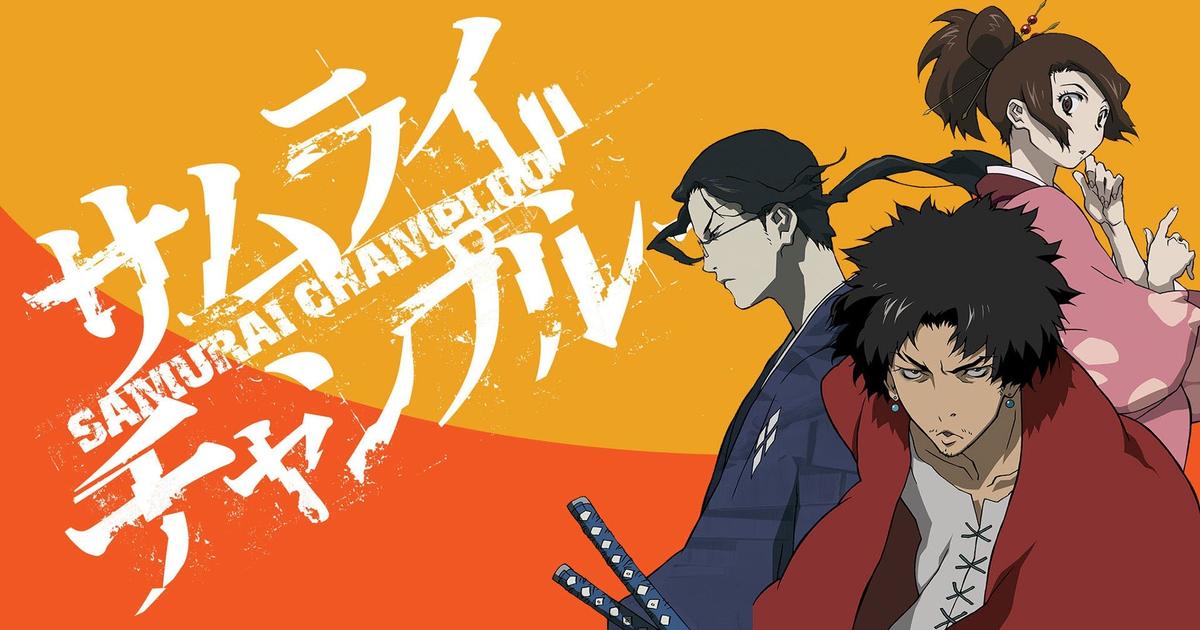
The destination, however, remains one of the most contested aspects of the Samurai Champloo to this day. While the series takes its time focusing on the journeys, the characters embark on together, whether or not the ending works with the way the characters grew and developed is put into question. Even with the way the series is left open-ended enough that continuations have always been a possibility, it has to be asked: does the winding path of Samurai Champloo actually lead to the conclusion it presents as the finale?
Rooster, Koi Fish, and Squirrel
A recap of who exactly the characters are and what their stakes in the series are is in order to truly understand the paths they walk and how the ending unfolds. The central trio of characters, Fuu, Jin, and Mugen, meet by sheer coincidence. Meeting each other in the tea shop where Fuu works as a server, Mugen, and Jin attempt to fight to the death after each independently insults the village’s governor. Jin does so by murdering the governor’s bodyguards for attempting to murder a villager for an unknown slight, and Mugen by assaulting and breaking the fingers of the governor’s son, who later dies in the fire started by Jin and Mugen’s fight.
Before their slated execution, Fuu saves their lives and asks in return that they accompany her on her search for the “samurai who smells of sunflowers” and hold off on their fight to the death until they find him. While the two initially refuse, they eventually agree to leave the decision up to a coin toss: heads they do as they please, tails they accompany Fuu. To the surprise of no one through a perceived stroke of rotten luck, the coin lands on tails (( “Tempestuous Temperaments.” Samurai Champloo, season 1, episode 1, Manglobe, 20 May. 2004. Hulu. )).
The Rooster
Mugen, known for his totem, the rooster in the opening title cards, was born in a penal colony in the Ryukyu Island and lived the life of a criminal out of necessity. Working with his “friend” Mukuro and stepsister Koza, the three would commit acts of piracy to build assets and reputations. Caught while the others escaped and used him as a scapegoat, Mugen was given tattoos used to denote criminals and sentenced to execution following his prison stay. Mugen managed to survive by throwing himself off a cliff and continued life as a vagabond who lived to fight and kill stronger opponents (( “Misguided Miscreants (Part 1).” Samurai Champloo, season 1, episode 13, Manglobe, 26 Aug. 2004. Hulu. )) (( “Misguided Miscreants (Part 2).” Samurai Champloo, season 1, episode 14, Manglobe, 2 Sept. 2004. Hulu. )).
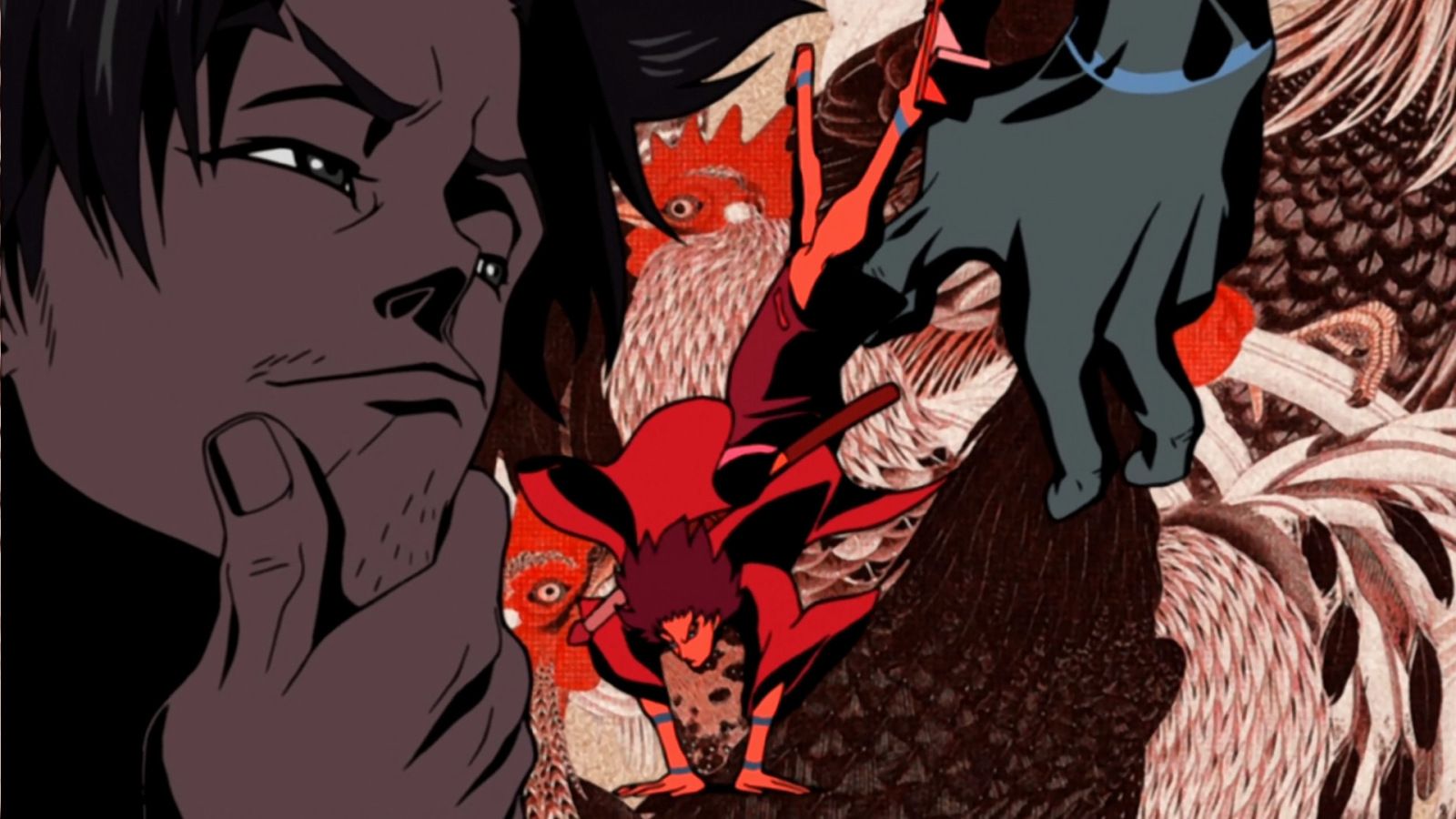
Whether as a byproduct of Mugen’s rough start in life, his abandonment by his previous friends, or a combination of the two, Mugen keeps people at arm’s length. If they’re not strong, and by extension, not worth killing, they’re not worth his time. Vulgar, immature, the definition of self-centered, and with his face next to “bull-headed” in the dictionary, Mugen makes no connections not because he’s inexperienced, but because he refuses to give most people things like the time of day or basic respect — unless they offer themselves as an obstacle to overcome and kill.
The Koi
Characterized by his totem, the koi fish, Jin begins the series as a wandering rōnin. Orphaned at a young age, Jin trained in Mujushin Kenjutsu under his master Enshiro Mariya for most of his life, dedicating himself to the sword at the cost of giving up any connections he could have made with his peers. When Jin protested his master’s decision to convert the dojo into an assassin’s school, Enshiro was ordered to kill Jin. The attempt, done in the middle of the night while Jin slept, failed and Jin murdered his master and fled the dojo, hunted by his fellow students who had no knowledge of what transpired that night (( “The Art of Altercation.” Samurai Champloo, season 1, episode 8, Manglobe, 15 July. 2004. Hulu. )) (( “Evanescent Encounter (Part 1).” Samurai Champloo, season 1, episode 24, Manglobe, 5 Mar. 2005. Hulu. )).
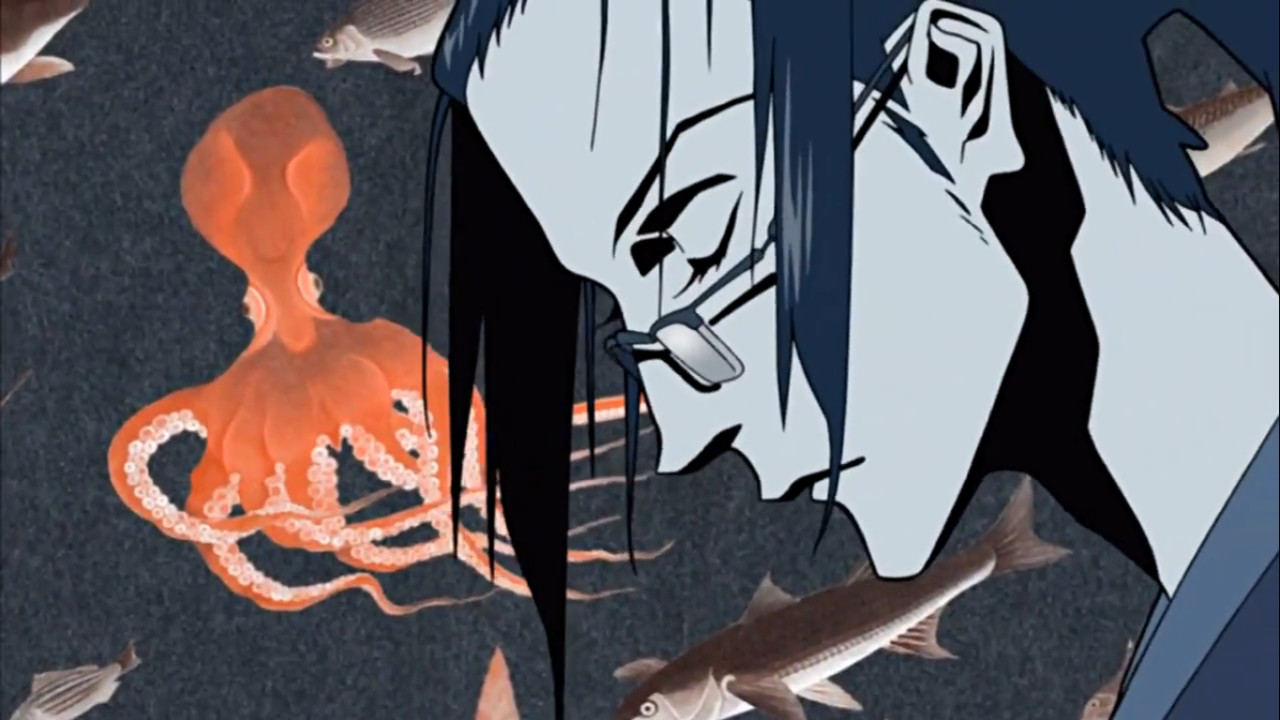
Taciturn and aloof, Jin’s character growth throughout the series involves his ability to connect with people — more so than Mugen, even, as Jin never had the opportunity (by his own unintentional design) to ever develop meaningful relationships with others. Mugen actively chooses to avoid spending time with people because of a lack of trust, but Jin does so because he never was able to before and, likely, as a sort of penance for murdering his master, who was the closest thing to a father figure he ever had.
The Squirrel
Fuu shares her totem of a squirrel with her pet Momo, a flying squirrel that she keeps with her at all times. When her father left after leading an attempted Christian uprising in a time when Christianity was prosecuted heavily in Japan, Fuu and her mother were left to fend for themselves. Fuu’s mother died when Fuu was young from an unknown illness, which left Fuu without family or friends (( “Unholy Union.” Samurai Champloo, season 1, episode 19, Manglobe, 29 Jan. 2005. Hulu. )). She eventually gained employment as a server at a tea shop. Fuu always wanted to search for her father, “the samurai who smells of sunflowers,” to get revenge and closure for him abandoning her and her mother, but never worked up the courage to do so (( “Evanescent Encounter (Part 3).” Samurai Champloo, season 1, episode 26, Manglobe, 19 Mar. 2005. Hulu. )). That is until Mugen and Jin enter the picture.
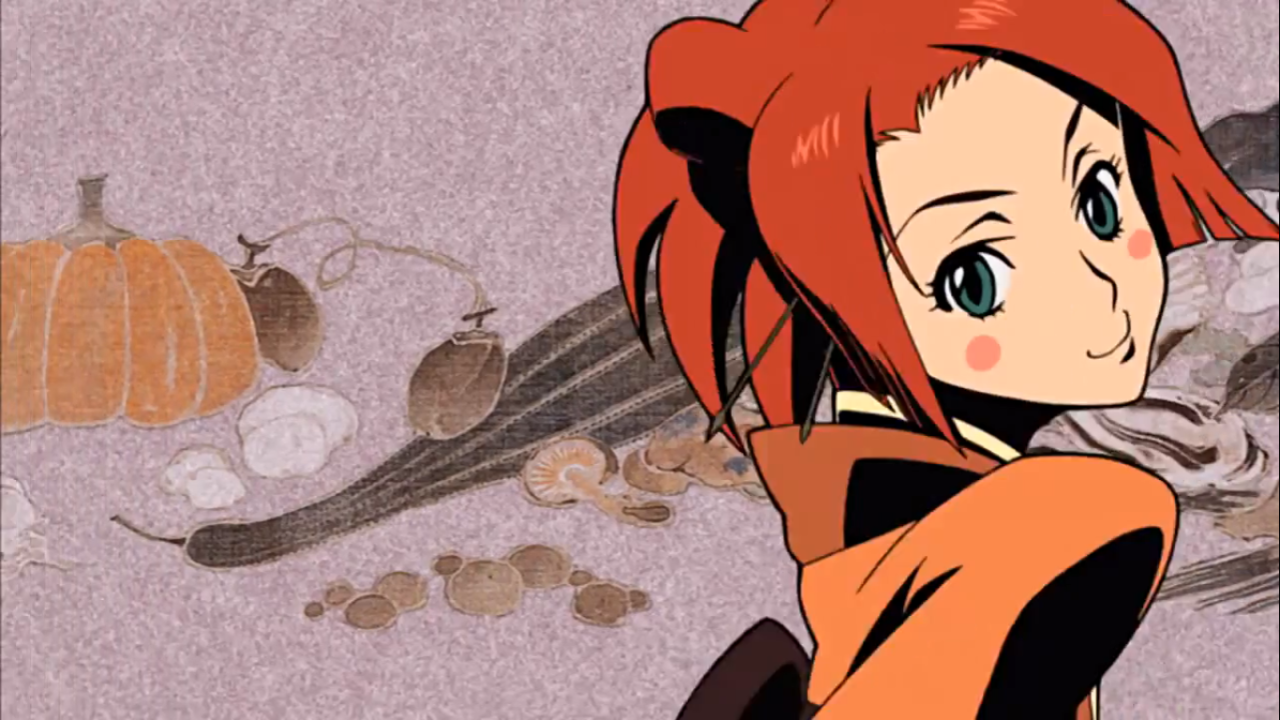
In direct contrast to Mugen and Jin, Fuu is quite often the character who connects the most to the side characters or is the one to incite the plot in some way because of her innate ability to empathize with others. Despite being almost as spirited and self-centered as Mugen at times, Fuu shines as the connective tissue of the group. Her initial potential to fulfill that role, however, is overshadowed by an innate fear of abandonment. Any and all attempts to bind Jin and Mugen to the promise they made her fail at the start because, unlike the both of them who keep people at a distance, Fuu wants to keep them close and hangs the lost coin toss over their heads to keep them with her. A note of hypocrisy sometimes occurs, however, as Fuu is the one who often pushes Jin and Mugen away in the first place in an attempt to look strong and capable (( “Evanescent Encounter (Part 1).” Samurai Champloo, season 1, episode 24, Manglobe, 5 Mar. 2005. Hulu. )).
Lost On The Road Of Life
Samurai Champloo’s story follows a very unstructured format. Occasionally, a new scrap of information related to the location of the Sunflower Samurai is released, or more substantial information as to why Fuu wants to find the Sunflower Samurai is revealed. However, much of the exposition for the greater plot happens in the last three episodes. Samurai Champloo uses the broader quest as a way to explore the characters – instead of being plot-driven, it’s a character-driven narrative. Each episode acts less like an episode and more of a snapshot of the main trio’s lives. The show is meandering and slow, taking its time to linger on each moment instead of rushing ahead to reach the end.
The Reality Of Purpose
Considering the importance Samurai Champloo places on the building of connections with other people, even temporary, fleeting ones, it lends significance to this choice of keeping the plot slow and steady. After all, what better way of building a connection with someone than spending time with them? The narrative primarily focuses on the main trio growing as people, moving past their mistakes, and shedding their guilt and burdens. This allows them to truly view each other as equals and reach the point where they consider each other honest friends.
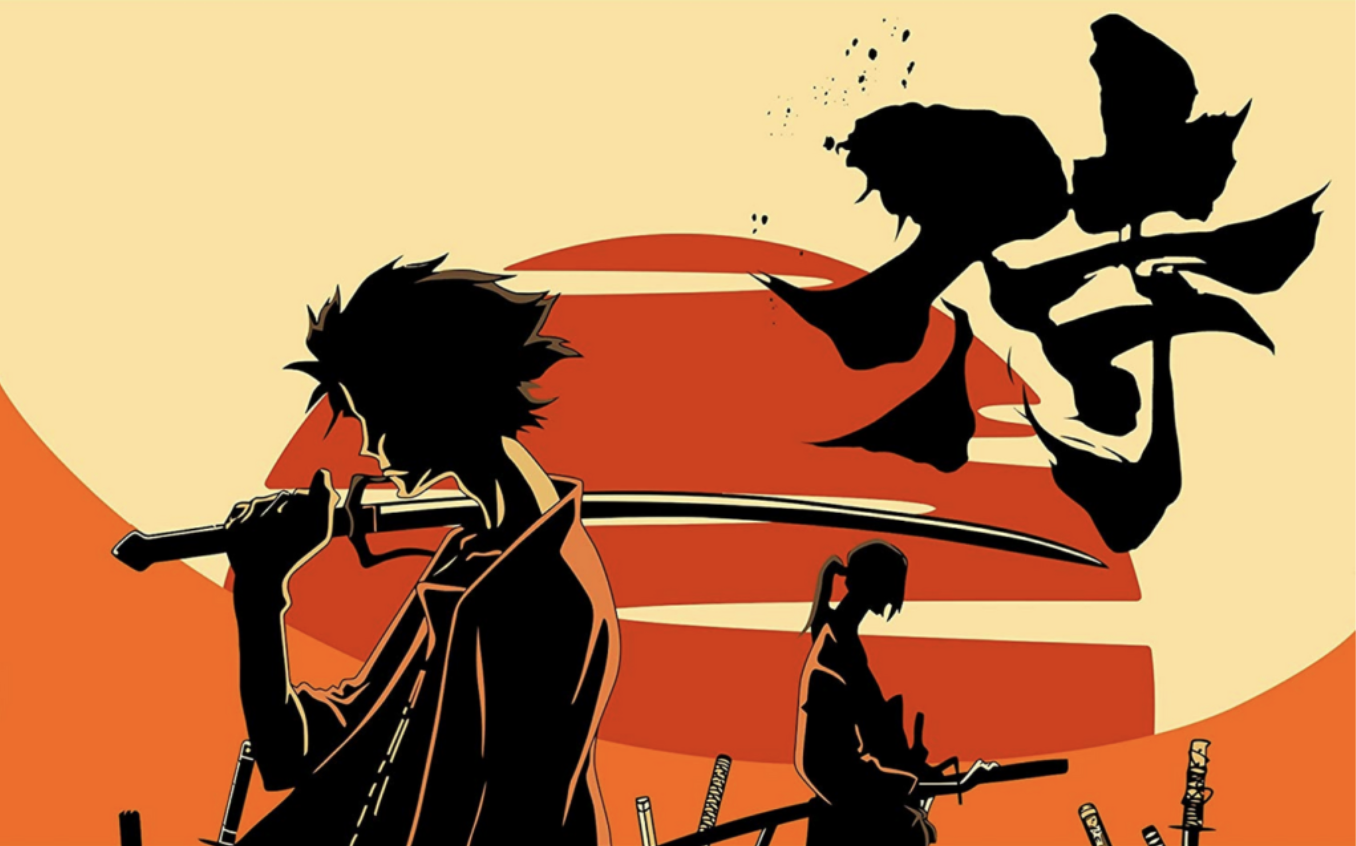
The only reason the trio reaches that point is that they meet one another. Before, the three were purposeless and adrift. Fuu is stuck in a dead-end job, Mugen a vagabond, and Jin, a disgraced samurai. Even in the case of Fuu, who knows what she wants to do, has to contend with the very likely possibility that she will never find the “samurai who smells of sunflowers.” As mentioned before, not only do sunflowers have no scent, but Fuu was too young to remember anything about her father when he left. The purpose she gives Mugen and Jin and the abilities they lend Fuu to achieve that purpose are all tenuous at best thanks to the complete aimlessness of their goal (( Bonsai Pop, director. Samurai Champloo: What Is Purpose? YouTube, Bonsai Pop, 3 Aug. 2019. )). Certain episodes amplify this lack of purpose by highlighting the characters’ pasts and putting them against the episode’s side-character to show their inability to obtain their purpose even when they know what that purpose is.
And yet, life itself so very rarely grants a clear-cut obtainable purpose, and life is what Samurai Champloo draws most from. Rarely does life offer a grand quest with a defined beginning and end that induces quick and easy growth, and the exact same applies to Samurai Champloo, as it runs with this idea (( Scamboli Reviews, director. Samurai Champloo Is Insanely Good. YouTube, Scamboli Reviews, 26 Oct. 2019. )). Never do the characters flat out state their pasts nor do they monologue in the middle of the episode what they’re about to do – it’s all revealed slowly in conversations, interactions like it would be in the first few months of getting to know someone. The trio of Fuu, Mugen, and Jin go from mildly antagonistic allies to having almost familial bonds with each other, and it never feels forced.
End Of A Journey, For Better Or Worse
All stories and all journeys must come to an end. One chapter ends, and another begins until the book finishes. By the end of Samurai Champloo, Fuu willingly lets Mugen and Jin free from their promise to her and finds her father; Mugen lets the chance to fight an opponent go to help Fuu; Jin confronts the murder of his master and realizes how much he’s come to care for Fuu and Mugen; Mugen and Jin’s fight to the death ends in a complete stalemate and they live, able to finally admit what the other means to him. Samurai Champloo’s ending is less so the culmination of the plot and more the culmination of the characters finally banishing the spirits of the past haunting them and finally allowing themselves to honestly connect with each other, free of secrets and without barriers. The series, then, ends with the three splitting up.
Parting Of Ways
Samurai Champloo’s ending subverts expectations. After the three finally become comfortable with each other, Fuu sets off on her own just like Mugen and Jin did to her several times. After nearly dying, Mugen and Jin fight their “final” duel, and it ends in a draw with both alive. Mugen says at the beginning of their journey that “guess no matter how hard we try, fate’s gonna keep throwing us back together,” and the three still try to defy fate and remain stubborn (( “Hellhounds for Hire (Part 1).” Samurai Champloo, season 1, episode 3, Manglobe, 10 Jun. 2004. Hulu. )). Would it not make sense that, finally at peace with themselves, they face the next chapter of their lives together?
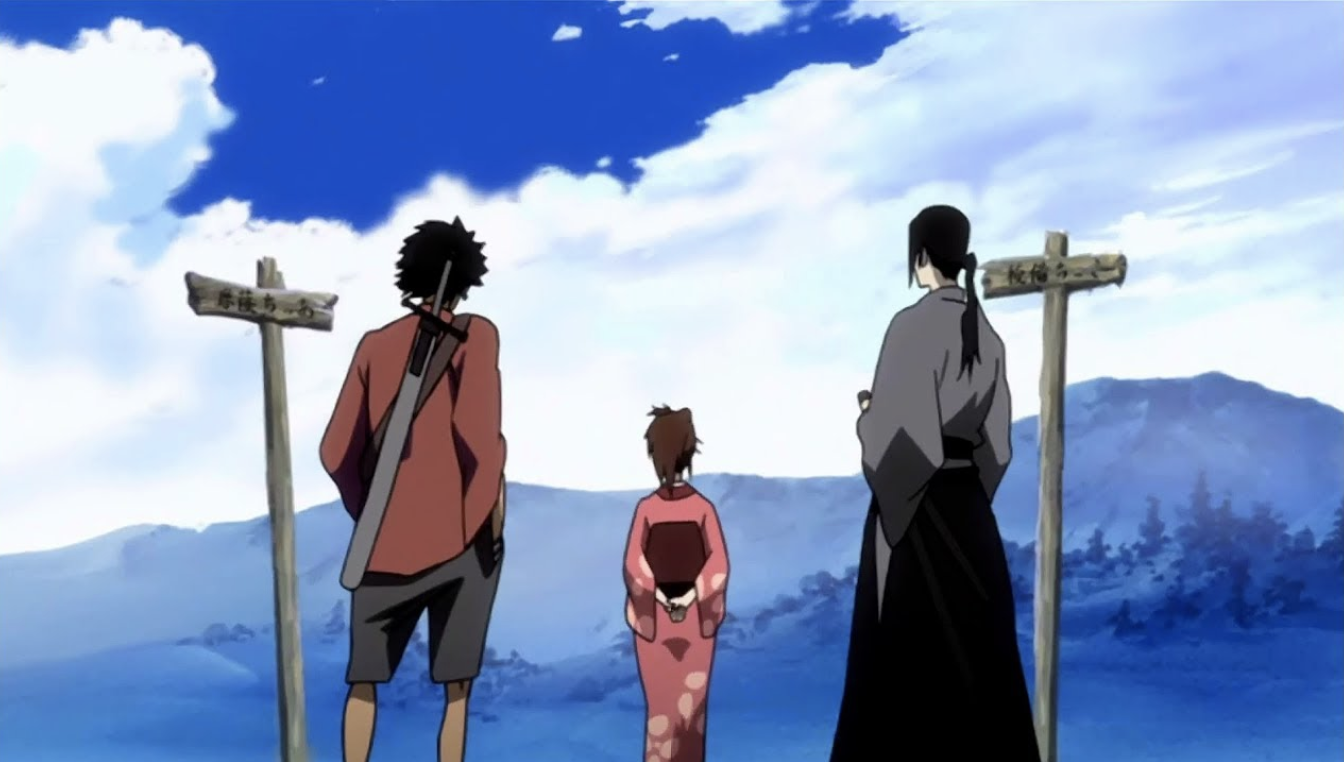
It is important to note that all three do have something “waiting” for them after their quest. Fuu has an offer from the couple who owned the tea house she worked in to travel with them; a woman proclaimed to an unconscious Mugen that he’s the man she’ll marry after they broke up a counterfeit coin operation together; Jin freed a woman from her husband and prostitution and helped her escape to earn her freedom (( “Tempestuous Temperaments.” Samurai Champloo, season 1, episode 1, Manglobe, 20 May. 2004. Hulu. )) (( “Gamblers and Gallantry.” Samurai Champloo, season 1, episode 11, Manglobe, 5 Aug. 2004. Hulu. )) (( “Bogus Booty.” Samurai Champloo, season 1, episode 15, Manglobe, 9 Sept. 2004. Hulu. )). It almost feels hollow, in a way, that after spending so much time with these characters and watching them spend so much time with each other, they’d part ways so soon after admitting that they care for people they barely know.
Perhaps there is something naive in thinking that the three would stick together after their journey’s end, especially when one of the major themes of Samurai Champloo is moving on and moving forward (( Isu. “The Beauty of Samurai Champloo’s Ending.” Kunimitsu, Kunimitsu, 11 Jan. 2017, )). They all seem sure that they’ll meet again someday, and there is a sort of melancholic beauty in knowing that they are all at peace with themselves and in recognizing that bonds remain strong no matter the distance. Perhaps it is bold to say that the journey’s destination is superfluous and does not match the taken path. Perhaps it truly is natural that the three split given Fuu’s reveal that she lied in the coin toss and that she lost the bet right before they leave.
Perhaps that is just life — a melancholic ending to a long, beautiful journey. After all, if there’s one thing Samurai Champloo emulates, it’s life.
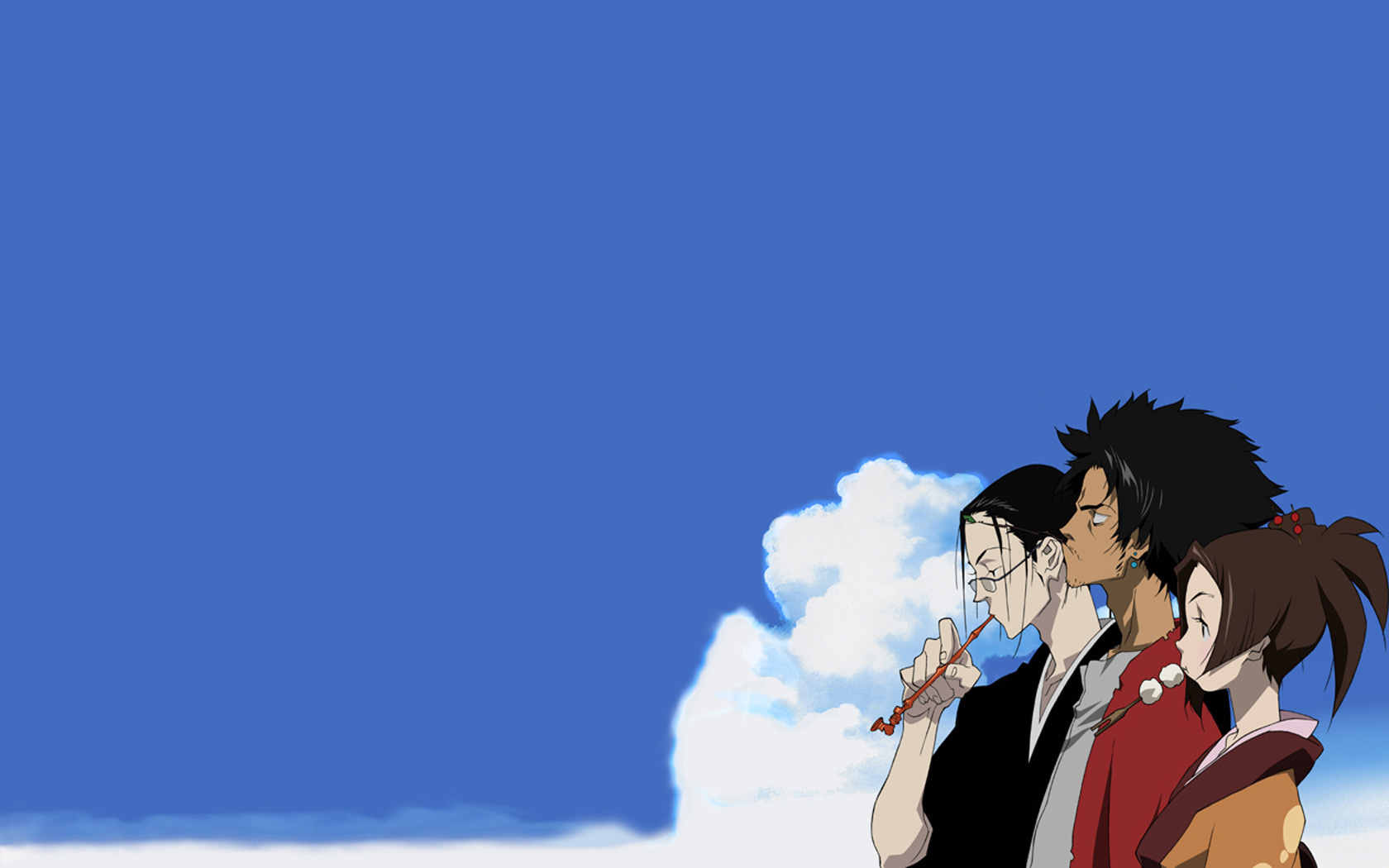
Great article! Looking forward to the next.